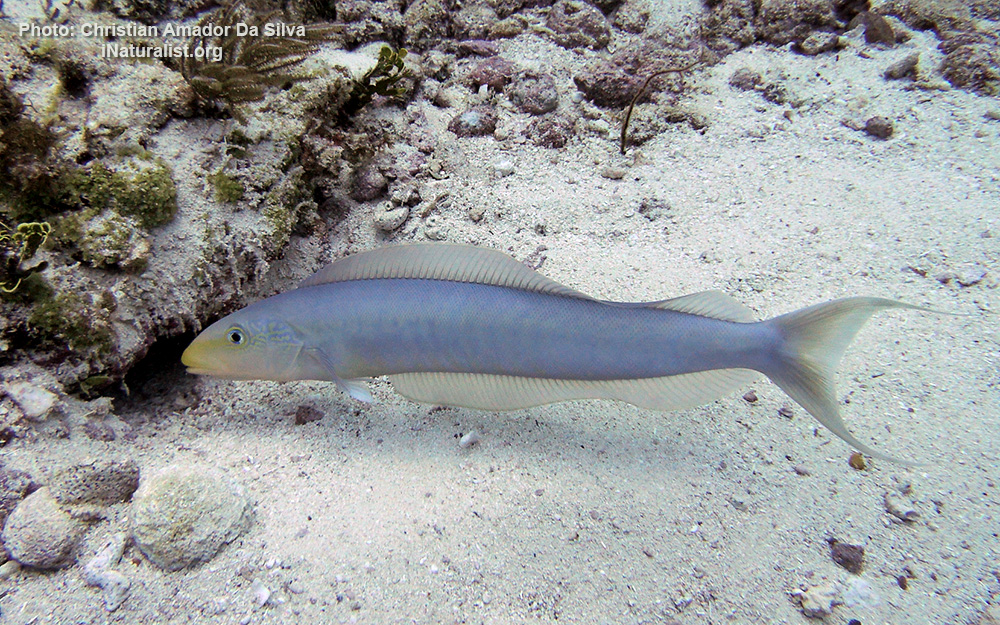Sand tilefish
(Malacanthus plumieri)

Classification
General data
Malacanthus plumieri, the sand tilefish, is a species of marine ray-finned fish, a tilefish belonging to the family Malacanthidae. It is found in the western Atlantic Ocean.
Description
Malacanthus plumieri has a highly elongated, slightly compressed body with a slender, rounded head. There is a large, sharp spine at the corner of the gill cover. This species varies in colour from yellowish white to pale bluish gray. The head has pale yellow and bluish markings. The dorsal and anal fins are long. The caudal fin is lunate and is mainly yellow in colour with a dark blotch on the lower part of the upper lobe.
This species has 4–5 spines and 53–57 soft rays in its dorsal fin while the anal fin has 1 spine and 50–52 soft rays.
The maximum recorded total length is 70 cm (28 in), although 50 cm (20 in) is more typical. They can weigh up to 1 kg (2.2 lb).
Distribution
Malacanthus plumieri is found in the western Atlantic Ocean. It ranges from Cape Lookout in North Carolina and Bermuda in the north southwards along the coast of the United States to the Bahamas, into the Gulf of Mexico where it has been recorded from the Florida Keys, along the shoreline of the Florida panhandle as far as eastern Louisiana, the Flower Garden Banks and the surrounding area, it also occurs from Tuxpan and along the Yucatan Peninsula and around Cuba. It can be found widely in the Caribbean Sea, and on the coast of Brazil from the mouth of the Amazon River mouth south to Uruguay. They are absent from the coasts from the mouth of the Orinoco River to the Amazon. It is also known from Trinidade Island off Brazil and Ascension Island in the eastern Atlantic.











